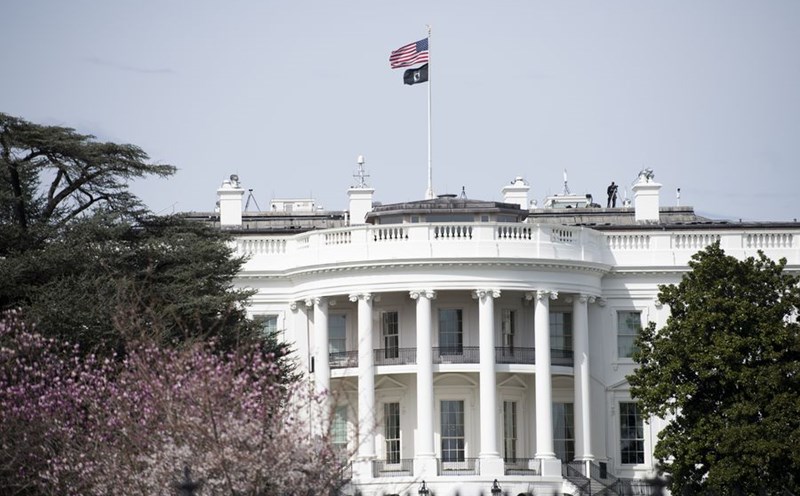Reducing pressure on the public health sector
Mr. Tran Van Hong (65 years old, Hai Anh commune, Ninh Binh) has to go to a public health facility at 6:30 am for a periodic blood pressure check-up, but usually waits until nearly noon to be called. "The doctor directly examined for only about two minutes, without asking for advice or adjusting the medicine. The process is repeated every month: Half a day of waiting, about 250,000 VND in travel expenses, only 30 blood pressure pills worth tens of thousands of VND on the market are available" - Mr. Hong said.
After 1 year, Mr. Hong decided to give up his health insurance and move to a private clinic. Here, the entire procedure and examination and treatment only take 30 minutes, the doctor gives careful advice and serves wholeheartedly. In fact, when public services still have many shortcomings in terms of time, service attitude and treatment effectiveness, people find it difficult to confidently rely on their health.
Associate Professor, Dr. Nguyen Lan Hieu - Director of Hanoi Medical University Hospital - told the story of a patient who chose to endoscopy at a private hospital to avoid jostling. The results were good but the cost was nearly 8 million VND, many times higher than that of a public hospital. Currently, the demand for healthcare is increasing, public hospitals are overloaded, causing people to seek private healthcare, but service prices are still high. This requires the State to have preferential policies on land, credit, planning... to encourage investment, reduce costs and expand access.
According to statistics from the Ministry of Health, as of August 2025, there are 400 private hospitals in Vietnam (378 hospitals with domestic investment capital and 22 hospitals with foreign investment capital). Of these, there are 116 hospitals with a scale of 100 beds or more.
Private hospitals currently account for 23.8% of the total number of hospitals nationwide. The bed rate of private hospitals is 7%. The rate of private hospital beds per 10,000 people accounts for 2.48 hospital beds per 10,000 people. The private health sector still has 53,527 private clinics and medical service facilities providing services nationwide.
In particular, private healthcare is increasingly participating in the health insurance examination and treatment system. By the end of 2024, the country will have 1,132 private medical facilities providing health insurance for medical examination and treatment (including hospitals and clinics). The number of private medical facilities participating in the health insurance examination and treatment system has increased about 2.1 times compared to 2015.
Private healthcare is increasingly becoming a priority choice, especially in large cities, thanks to strong investment in infrastructure, human resources and technology, raising services to approach international standards.
Tam Anh General Hospital system achieves almost absolute quality scores, leading the private sector in Hanoi and Ho Chi Minh City, standing out with surgical robots, MRI 3.0 Tesla, CT 1,975 slices integrated with AI and being paid for health insurance without a referral letter. In the testing area, MEDLATEC General Hospital provides on-site sample collection service 24/7, fast response results, meeting international CAP standards, linking more than 50 hospitals and expanding the network to rural areas, increasing access to high-quality services.

New driving force for private healthcare
Resolution 72-NQ/TW expands the mechanism for the health sector, emphasizes the development of private healthcare and mobilizes all resources. The Resolution prioritizes clean land funds, allows flexible conversion to medical land, exempts or reduces land use fees, leases and taxes; allows the lease of surplus state headquarters and works to reduce site costs. Public and private non-profit health facilities are exempt from corporate income tax, encourage reinvestment and service upgrades.
Associate Professor, Dr. Nguyen Lan Hieu said: Resolution 72 of the Politburo has opened the door for the development of private healthcare as well as promoted public-private cooperation in this important field. This is considered an important solution to mobilize social resources for health care, but there is still a big bottleneck: Public brand value has not been clearly qualified. To cooperate effectively, it is necessary to determine and accurately evaluate the contributions of each side. While private units are transparent with specific data and regulations, in the public sector, in addition to the reputation of hospitals and the medical team, many other valuable factors are still vague. If the Government issues a detailed guiding decree, cooperation will be exploited to the fullest and the people will be the first beneficiaries.
Minister of Health Dao Hong Lan affirmed: A comprehensive, effective and sustainable health system cannot be without the participation of both the public and non-public sectors.
In recent years, the Ministry of Health has submitted to the National Assembly many important laws, issued decrees and guiding circulars; cutting 785 business conditions (more than 25% nationwide), decentralizing nearly 90% of procedures to localities and promoting online submission of documents for transparency and negative prevention.
The Minister emphasized the need for more incentives on taxes, land, and credit for healthcare businesses; perfecting regulations on public-private partnership (PPP); encouraging investment in high-quality services, scientific research, drug, vaccine, medical equipment production, and care for vulnerable groups.
Local areas and ministries and branches need to consider private healthcare as an indispensable part of health development planning; create favorable conditions for land and procedures; promote dialogue and public-private cooperation - Minister Dao Hong Lan affirmed, and pledged that the Ministry of Health will always accompany, remove difficulties, listen to criticisms to perfect policies.
According to Deputy Minister of Health Tran Van Thuan, public health plays a leading role but has not fully met the demand, many hospitals are overloaded, and the quality is not uniform. Private healthcare has therefore become a breakthrough, both reducing the burden and attracting international patients with the hospital - hotel - resort model.
According to Decision 201/QD-TTg, by 2025, private hospital beds will reach at least 10%, by 2030 will be 15% and by 2050 will be 25%, while promoting public-private partnership, high-tech investment, and international standard services.











